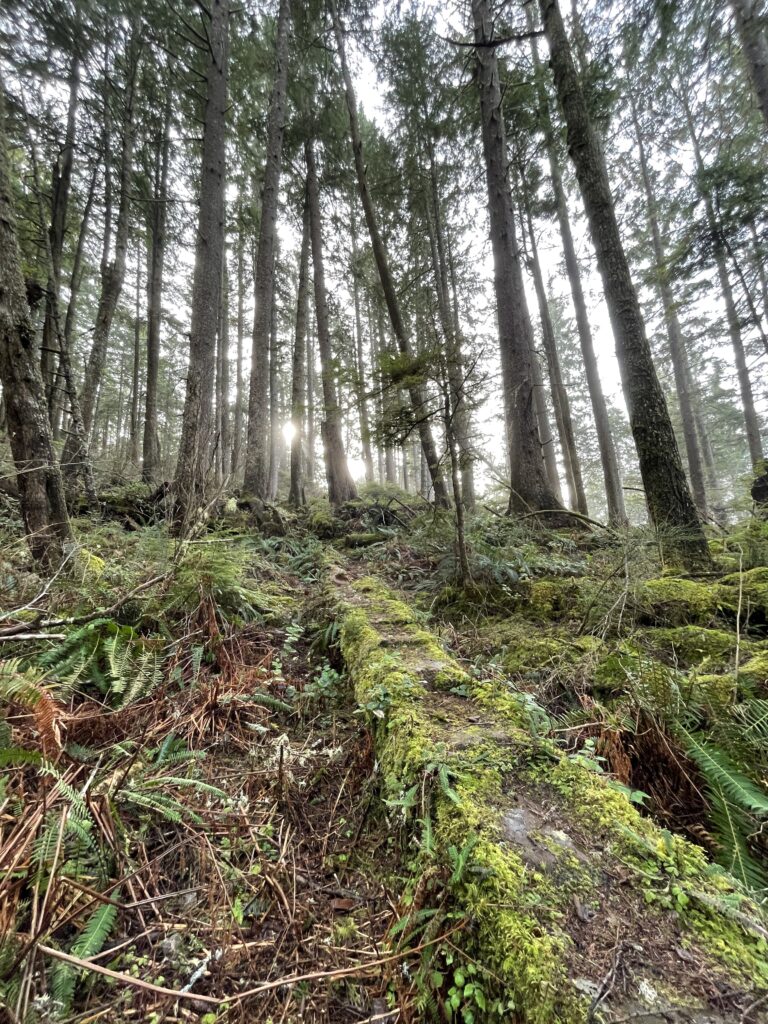
Start Your Journey Of Stewardship
Owning a forest is an incredible opportunity. Forests offer us inspiration and a connection to the land, but if you’re a new forest owner it can be overwhelming to know where to start your journey of stewardship.
Many resources for landowners focus on how to maximize timber value. But what if your goals are different?
What if you also care equally about:
- Clean air and water
- Carbon storage
- Wildlife habitat
- Natural beauty
That’s what ecological forestry is all about: recognizing that forests are complex systems, and managing for diverse objectives. At NNRG, we use ecological forestry principles to help forest owners manage their land for multiple benefits — not just timber.
If you’re interested in improving the health and resilience of your forest, but don’t know where to begin, this page is for you. Read on to learn how you can determine whether your forest needs management, and reach out to us today for a free site visit from an NNRG forester!
Does my forest need management?
In Washington, many forests face a few common challenges. Here are two big ones — and how to tell if they might apply to your land:
1. Is my forest overstocked?
An overstocked forest has too many trees growing close together. That means more competition for sunlight, water, and nutrients — which weakens trees and increases susceptibility to disease or drought.
Signs your forest may be overstocked:
- Dense canopy with little sunlight reaching the forest floor
- Trees are tall, thin, and tightly packed — sometimes just a few feet apart
- Little understory growth (ferns, shrubs, wildflowers)
- Trees showing signs of stress: dead branches, top dieback, leaning or falling over
Does your forest look more like the image on the top or on the bottom? Click and drag to move around within the images, and make sure to look up at the canopy.
This is the same forest, before (top) and after (bottom) thinning. If your forest looks more like the one on the top, it may be overstocked. Notice how after thinning more light reaches the forest floor, and most trees have a little room around their canopies to expand.
2. Is my forest a monoculture?
Many forests in Washington were planted with a single species (often Douglas-fir) after clearcut logging. This can lead to a monoculture — a forest with low species diversity — which makes forests more vulnerable to pests, drought, and climate change.
Signs your forest may be a monoculture:
- Most trees are the same species, age, and size
- Few broadleaf trees like maple, alder, or madrone
- Forest feels uniform, quiet, and supports limited wildlife activity

It’s common for forests in western Washington to suffer from both of these conditions.
Don’t worry — there are many tools available to help you. With some thoughtful stewardship, you can guide your forest toward better health, greater resilience, and increased diversity.
For example:
- Thinning overcrowded trees can reduce competition and improve overall forest health (see our video here and post here to learn more about when and why we thin forests)
- Encouraging a mix of species through planting and/or thinning enhances wildlife habitat and reduces pest and disease risk
- Some activities, like commercial thinning, may pay for themselves through timber revenue
- Cost-share funding is available to support other forest restoration work, such as pre-commercial thinning, invasive species removal, and tree planting.
Want help figuring out your next steps?
Every forest is different. The best way to get started is to schedule a free site visit with one of our foresters.
We’ll walk your land together, answer your questions, and help you identify practical steps you can take to improve forest health — whether your goal is habitat, climate resilience, or just a beautiful, thriving forest.
Videos
I Know This Land
Paul Butler has loved forests his whole life. He and his wife are now stewards of their own forest. He tells us how his relationship with his woods has deepened over time and what actions he’s taking to nurture forest health and pass on this legacy.
Thinning Your Forest
Kirk Hanson with Northwest Natural Resource Group explores the differences between dense stands of stressed, suppressed trees and thinned stands that give trees and understory plants the light and space to grow.
to thin, or not to thin?
If you’re considering undertaking a commercial thinning on your property, this video will give you an idea of what to expect during and after a thinning aimed at increasing tree growth, resilience, diversity, and wildlife habitat.
more resources
A forest of your own: the book
NNRG’s Kirk Hanson and Seth Zuckerman have written a book that distills NNRG’s approach to forest stewardship into a single accessible handbook. Illustrated with photos, diagrams, and maps, A Forest of Your Own is now available for purchase.
Practices to Steward a Beautiful Forest after Timber Harvest
This guide, intended for forest owners who are preparing to log or have just finished a timber harvest, focuses on planning for a successful harvest and taking advantage of the years after harvest to understand how the forest is responding and to proactively address common forest health concerns.
Do-It-Yourself Ways to Steward a Healthy, Beautiful Forest
This guide focuses on simple things Northwest forest owners can do themselves to attract wildlife to the land, provide recreation, and contribute to its well-being.
Check out the Resources section on our website for much, much more!
